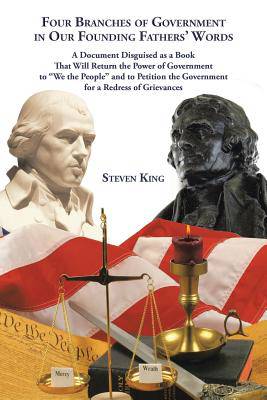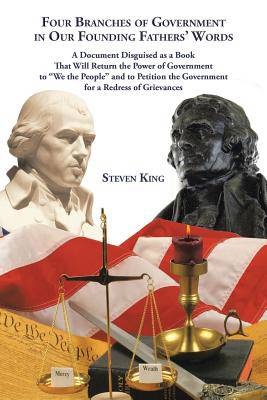
Je cadeautjes zeker op tijd in huis hebben voor de feestdagen? Kom langs in onze winkels en vind het perfecte geschenk!
- Afhalen na 1 uur in een winkel met voorraad
- Gratis thuislevering in België vanaf € 30
- Ruim aanbod met 7 miljoen producten
Je cadeautjes zeker op tijd in huis hebben voor de feestdagen? Kom langs in onze winkels en vind het perfecte geschenk!
- Afhalen na 1 uur in een winkel met voorraad
- Gratis thuislevering in België vanaf € 30
- Ruim aanbod met 7 miljoen producten
Zoeken
Four Branches of Government in Our Founding Fathers' Words
A Document Disguised as a Book That Will Return the Power of Government to "We the People" and to Petition the Government for a Redress of Grievances
Steven King
Paperback | Engels
€ 21,95
+ 43 punten
Uitvoering
Omschrijving
Four Branches of Government The words that describe and name our branches of government in the Constitution's Articles I, II and III are the following in order of appearance: Congress, Senate, House of Representatives, Representative, Representatives, Senators, Senator, Vice President, the President of the United States, each House, either House, neither House, two Houses, that House, the other House, both Houses, a President of the United States of America, said House, the President, one supreme Court and those are all the words. Having four branches being the President, House of Representatives, Senate, and supreme Court, each branch now has 25 percent of the power if disbursed evenly. How many branches of government can shut down government? The answer is three branches, the President (25 percent of power), the House of Representatives (25 percent of power), and the Senate (25 percent of power), this being done while the supreme Court (25 percent of power) can only watch because it has no legislative or executive powers. During the last government shutdown, who shut down the government, the legislative branch or the House of Representatives? If you answer the legislative branch, then which one? That in itself is an admittance of two branches of government that come together using their shared powers to legislate our laws. Now as you should be able to see the proper descriptive phrase too describe our government (NOT the Actual Bodies or Branches but the Powers of the branches) is executive branch, legislative branches (meaning two or more and both branches, House of Representatives and the Senate, convene to form Congress to legislate laws under the powers of the Constitution given to both branches) and judicial branch.
Specificaties
Betrokkenen
- Auteur(s):
- Uitgeverij:
Inhoud
- Aantal bladzijden:
- 352
- Taal:
- Engels
Eigenschappen
- Productcode (EAN):
- 9781504919272
- Verschijningsdatum:
- 14/10/2015
- Uitvoering:
- Paperback
- Formaat:
- Trade paperback (VS)
- Afmetingen:
- 152 mm x 229 mm
- Gewicht:
- 471 g

Alleen bij Standaard Boekhandel
+ 43 punten op je klantenkaart van Standaard Boekhandel
Beoordelingen
We publiceren alleen reviews die voldoen aan de voorwaarden voor reviews. Bekijk onze voorwaarden voor reviews.









